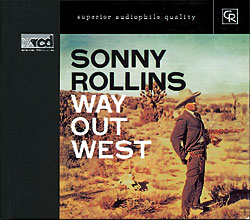| Columns Retired Columns & Blogs |
I was delighted to find this piece while searching for info on the new-to-me Shelly Manne and Andre Previn recordings, and the XRCDs in particular. I appreciate the justice you have done to this man's story. While he might not see it like we do, the man has left some astounding work, work that a 24 year old hardcore punk enthusiast in Ohio can find in the year 2014 and go "wow" over. As a teacher of digital audio and a lightweight recording engineer, I salute you and Mr. DuNann both.
 Roy and Dorothy are both 81. Dorothy is neatly turned out in sweater and slacks, with beautiful hair and a warm smile. The fact that someone from a magazine (even one whose name she does not know) is there to write about Roy makes her smile frequently. Roy is more skeptical—virtually no one has asked him about his work at Contemporary for at least three decades—but willing to make his best effort to remember those years because, on the phone, he has agreed to do so. Roy is compact and light on his feet, with hearing aids in both ears, dressed in clean jeans and a western shirt. His blue eyes sparkle with alertness. He gathers his thoughts before he answers each question, and a smile plays around the corners of his mouth when he encounters certain memories.
Roy and Dorothy are both 81. Dorothy is neatly turned out in sweater and slacks, with beautiful hair and a warm smile. The fact that someone from a magazine (even one whose name she does not know) is there to write about Roy makes her smile frequently. Roy is more skeptical—virtually no one has asked him about his work at Contemporary for at least three decades—but willing to make his best effort to remember those years because, on the phone, he has agreed to do so. Roy is compact and light on his feet, with hearing aids in both ears, dressed in clean jeans and a western shirt. His blue eyes sparkle with alertness. He gathers his thoughts before he answers each question, and a smile plays around the corners of his mouth when he encounters certain memories.





































